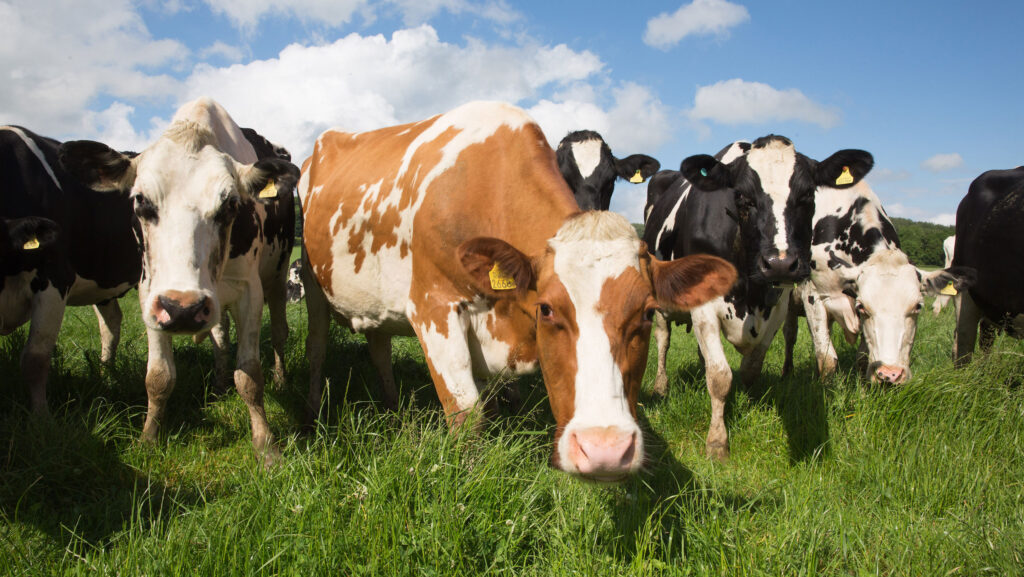Dairy farms set to return to profit due to higher milk prices
 © Tim Scrivener
© Tim Scrivener Dairy producers are forecast to return to a more profitable position for the 2024-25 milk year, after many incurred losses during 2023-24.
Improved dairy profitability has been primarily driven by higher milk outputs rather than cost savings, according to figures from Wiltshire-based farm business consultancy firm Douglas Green Consulting.
The consultancy projected an average profit of 1.1p/litre for conventional dairy producers during 2024-25, compared with a 1.5p/litre loss during the previous year.
See also: Unions challenge Defra on milk contract changes
Total cost of production is forecast to increase marginally by 0.3p/litre on the year to 45.6p/litre for 2024-25.
Meanwhile, total output is anticipated to lift by 3.2p/litre year-on-year to 47p/litre, due to strengthening milk prices.
Interestingly, the top 25% of producers in 2023-24 achieved a below average output of 42.4p/litre, but overall profitability was still higher due to lower costs.
The numbers
1.1 Forecast average profit for dairy enterprises during 2024-25 (p/litre)
45.6 Total cost of production during 2024-25 (p/litre)
33 GB average daily milk deliveries in mid-October (million litres)
Founder and director Douglas Green said lower purchased feed costs had helped in the past year, but this was partially offset by general inflation of overheads elsewhere.
He added that a lot of farmers had faced challenges making decent quality forage this year, putting a greater reliance on bought-in feed.
“Cost per tonne of feed has eased, but spend per litre on a big chunk of farms will not have eased, it will probably have increased.”
Mr Green suggested this had been suppressing dairy output for most of the year, but more recently there had been some recovery in supply, partially due to an improved milk to feed price ratio.
“The outlook for milk prices for the next six months is good and positive, but these things are cyclical and I don’t know how long it will be until prices start to ease again.”
Cost of production modelling by advisory firm The Dairy Group projected a similar trend with a return to profit 0.5p/litre forecast for 2024-25. However, this figure could vary depending on how the milk prices fare for the remainder of the milk year to March 2025.
Analysts at the firm said: “A good opportunity for reducing the cost of production is to look at the highest cost, which at 29% of total costs is purchased feed.
“There may be scope to reduce feed costs by making the best use of home-produced forage and buying the cheapest sources of energy and protein to meet the nutritional needs of the livestock on the farm.”
Supply and demand
GB milk supplies remained tight for most of summer, but more recently production increased and daily milk deliveries were up by 2.2% on the year during mid-October at 33m litres.
Dairy market specialist Chris Walkland told Farmers Weekly that the current milk supplies were higher than expected, although he suggested that supply could dip again once more cows moved solely to silage.
Mr Walkland added that the milk to feed price ratio had played a role in increasing supply, and factors he thought could have mitigated volumes, such as less labour available on farm, hadn’t.
“My gut feeling is there might be one or two more price increases to come through for those yet to receive November pricing. But I can see this slowing for December and into next year,” said Mr Walkland.
Producer numbers
Dairy dispersal sales have been particularly prevalent in the past year, however overall milk supplies remain relatively stable as volume per farm increases.
Mr Green said the dairy sector had been losing roughly one producer a day at least from the industry and there was no sign of that letting up.
There were 7,130 GB dairy producers left as of April 2024, following years of consolidation.
However, Mr Green suggested that only 4,000 farms producing 3m litres a year would be needed to maintain milk production at 12bn litres a year.
